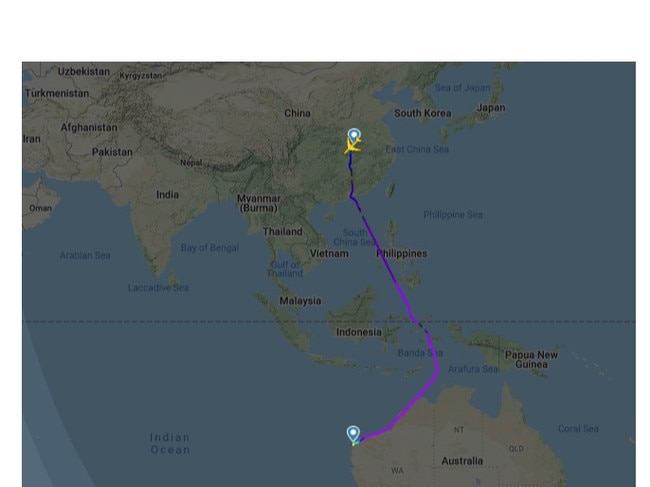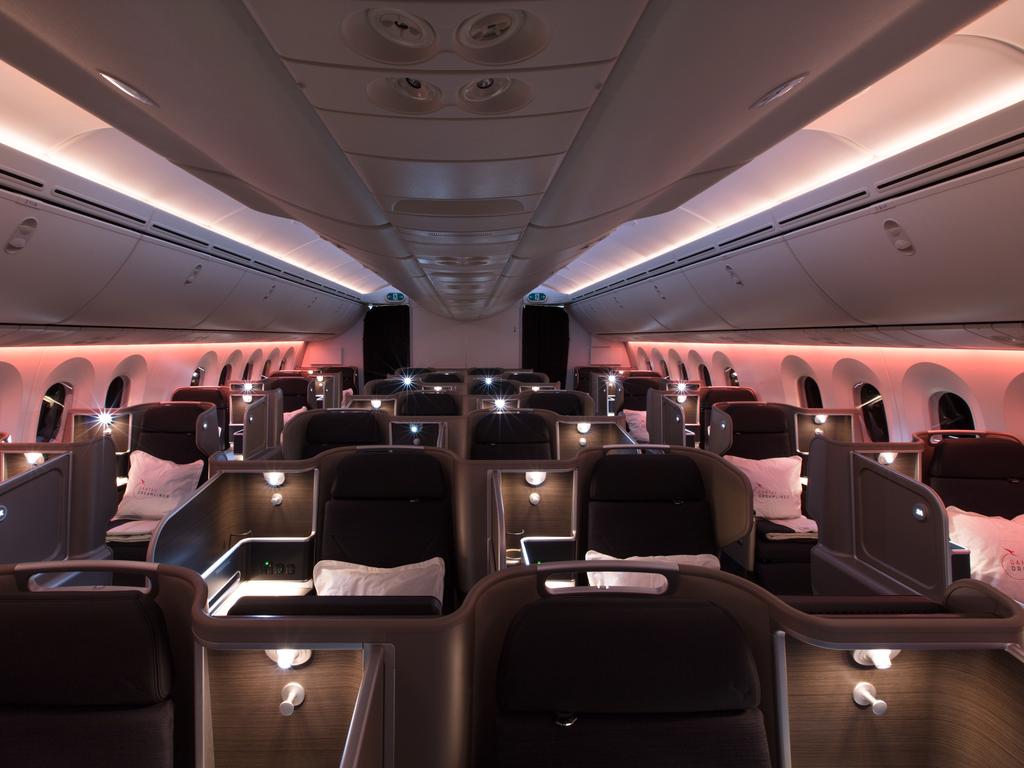Flight QF6032: how Qantas found a way out of Wuhan
Qantas pulled out all the stops to rescue Australians stuck in Wuhan in a masterpiece of planning and logistics.

In a city where many of the 11 million residents have been confined to their homes, where buses and trains don’t run and air travel is banned, the thundering roar of a Qantas Queen of the Skies landing at Wuhan Airport in the wee hours of the morning must have been deafening.
For residents of Wuhan, the noise of the rescue flight was unlikely to have been welcome — a reminder that the once thriving metropolis and popular tourist destination is now a place people want to flee rather than visit.
But for 243 Australians waiting at deserted Wuhan Airport for almost seven hours, the arrival of the Boeing 747-400 emblazoned with the Flying Kangaroo was a godsend.
Few could’ve known the work that had been done to get it there on Monday morning, less than a week after the request was made to Qantas to provide the service.
When CEO Alan Joyce agreed to the Prime Minister’s call for help, he was not only thinking of the many hurdles Qantas would face to operate the flight.
Top of mind was the airline’s proud 100-year history and its record of always being there to assist when Australians were caught up in inexplicable situations overseas.
Never mind that Qantas did not fly to Wuhan and had no flight plans, fuel contract, ground handling team or accreditation.
Never mind that it was the dead of winter in Wuhan and icing posed as much of a risk as the coronavirus.

Never mind that the virus was spreading and the flight needed to happen as soon as possible.
And so with four days to get the flight approved, crewed and planned to the very last detail, the Qantas team went to work.
First a dedicated war room was established in the Qantas integrated operations centre.
With the Chinese government ban on transport out of Wuhan in effect since January 23, formal approval was needed for the service. Reams of paperwork had to be pored over, filled out and triple checked by lawyers, medical specialists, consular officials and government bureaucrats.
The Department of Foreign Affairs and Trade and various consular offices in Asia got involved.
But there could be no waiting around until the approvals were granted.
In the war room, it was all systems go. More than 100 people from flight operations, IT, engineering, schedules, network, procurement and catering ultimately played a role in making flight QF6032 a reality, and then there was the crew.
The call went out for pilots and flight attendants willing to staff the aeroplane to required civil aviation safety standards.
Four pilots from the flight management team stepped up, and more than 50 flight attendants volunteered — “enough to crew the aircraft four times over”, a proud Joyce observed.

In the end, 12 were selected for a flight unlike any other they had crewed.
With approvals from China finally coming through on the weekend, the wheels were literally put into motion on Sunday, February 2, with QF6032 setting off from Sydney to Hong Kong to pick up the pilots and crew.
Then it was on to Wuhan, 939km away, a relatively short 1.5-hour flight.
The 747’s upper deck was repurposed for crew and Qantas support staff only, while the lower deck was prepared for passengers, government officials and medical staff.
Upon landing, just before 1am local time, crew were not allowed into the terminal — one of a slew of coronavirus precautions.
As the 747 underwent de-icing and refuelling by the local ground staff, the Qantas crew could only marvel at the lack of activity at Wuhan airport, normally a bustling gateway similar in size to Brisbane.
A meal of pork and rice, a drink and fresh fruit platter pre-packaged in Hong Kong were laid out on the seats by cabin crew, along with fresh face masks and hand sanitiser.
Passengers were finally cleared to board at 7.30am, close to 14 hours after arriving at Wuhan Airport, and the 747 prepared for takeoff.
The eight-hour trip home followed the “main highway” known as air track A461 from Hong Kong to Darwin. Any further west and Qantas would have had to secure overflight clearances from other countries which would have delayed the time-sensitive mission.
Approaching Darwin a right turn was made towards Learmonth Airport at Exmouth with the Australian coastline clearly visible.
Just after 4pm, it was wheels down and the captain addressed the passengers.
“Welcome home to Australia,” he said, to spontaneous applause throughout the cabin.
The rescue flight was completed and passengers disembarked, many expressing their gratitude as they headed down the airstairs to awaiting charter aircraft.
For them, the journey was not yet over. It was on to Christmas Island for two weeks in quarantine to be sure they are not carrying the coronavirus.
For Qantas, the foundations had been laid for more evacuation flights from China as early as Friday night — because the Flying Kangaroo can always be counted on in a crisis.






To join the conversation, please log in. Don't have an account? Register
Join the conversation, you are commenting as Logout